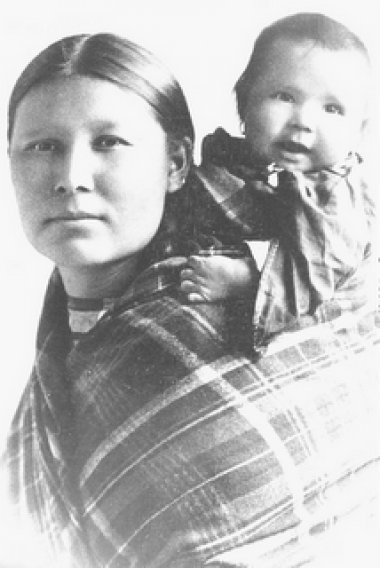
Before The United States was The United States, the island that we now call Manhattan Island was called Manahatta, and belonged to a group of people that had lived there for thousands of years. The Lenape Indians (or the Delaware Indians, as they were called by colonists who, having difficulty pronouncing Native words, named them after Virginia's first governor, Lord De la Warre) had a rich culture and history—over 20 different languages were spoken within their tribe alone. The Lenape people were diverse and numerous— differing from each other not only physically, but also in their social customs, religious practices, family structures and various levels of technologies. In Herbert Kraft's The Lenape-Deleware Indian Heritage, he says, "[The Lenape] are as different from each other as French are from Germans, or Italians are from Russians."
We continue to benefit from Lenape customs today— The Lenape (and other Native peoples) were responsible for cultivating foods now considered popular American staples. In Lenape Indian Cooking, the author Nora Thompson Dean says, "Think about the different foods you like to eat. Now take away corn, potatoes, tomatoes, most types of beans, sweet potatoes, squash, pumpkins, peppers, avocados, papayas, pineapples, modern strawberries, and cranberries. All of these foods are of American Indian origin."
In 1625, the Dutch East India Company (global economic power with broad legal authority to broker treaties on behalf of Dutch) negotiated a deal with the Lenape people. The Natives, not understanding the colonists' idea of "private property", were happy to share the land with the new settlers. They called them "brothers" and invited them to their homes and villages, introduced them to their communities and taught them how to cultivate the land. But the Dutch weren't interested in sharing. The Dutch were interested in owning, and for $24 and a few beads and trinkets, ownership is exactly what their treaty said they established.
The National Museum of the American Indian's publication, "Do All Indians Live in Tipis?" describes the sale of Manahatta as "an incredible misunderstanding". The Native people thought that the gifts were friendship offerings, and expected to subsist in the land with the settlers. They had no idea that they were giving their homes to the Dutch for "exclusive ownership". Explaining ownership to the Lenape would have been like telling them that someone "owned" the wind, or the air, or sunlight. They had no idea that, once the treaty was signed, they would be forced out of the island entirely.
The Europeans had a conception of land as commodity for permanent and private possession. Bolton states in his book, New York City in Indian Possession that the title to contract "could have appeared to the Native as little more than their customary exchange of gifts on any friendly occasion of exchange of compliments, in which the Indian's habit was to impoverish himself rather than to be outdone in generosity."
In 1653, the Dutch settlers built a wall to keep these native groups (and other colonists) off the land. "I can just see the Lenape standing outside the wall, looking up, wondering where their new friends went," says Bessie Wilder, a librarian at the National Museum of the American Indian.
When in 1673-1674 the Dutch ceded Manahatta by treaty to the English, the latter tore down the wall and paved it over. After the American Revolution forced the English out of the area in 1783, the Americans preserved the island and territories as their own, calling that long stretch of pavement, quite appropriately— Wall Street.
Joanne Barker is an Associate Professor of American Indian Studies at San Francisco State University and author of Native Acts: Law, Recognition, and Cultural Authenticity. In J. Kehaulani Kauanui's podcast "Indigenous Politics: From Native New England and Beyond" Barker discussed the colonization of Wall Street. "I wanna say from the outset," she said, "that of course there is in principle a lot of things that I support about what's happening at the ‘Occupy Wall Street' movement." She said that while it is "incredibly important" to both acknowledge and protest corporate greed, it is first important to understand that this structure has a colonial history that "needs account within the stories we tell". The history of imperialism has been lost, she says, as part of a past that we've "somehow moved on from, but it's actually the continued occupation of native lands."
Jessica Yee, in her article "Occupy Wall Street: The Game of Colonialism" laments that protestors and activists at Wall Street are ignorant of the history of the original occupiers. "Until these roots of colonialism…[are] part of the discussion," she says, "It's not going to go very far."
Barker goes further to say, "It's a bit like saying that you can have women's rights to equality without talking about the politics of race and class…or, that you can have ‘gay rights' without talking about the rights of people of color." She says the state is responsible for separating these issues by putting "band aids" on problems, but fails to address the connections of imperialism and oppression that intrinsically and historically link these issues together. "We must address the root," she says. "We must first understand the history."
First published at the blog Journalism 262 a month after OWS began; http://journalism262.blogspot.com/2011/11/lenape-original-occupiers-of-wall.html

